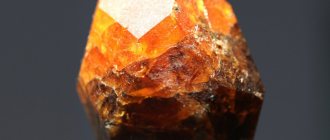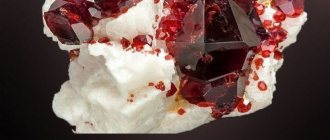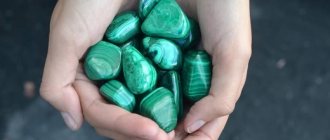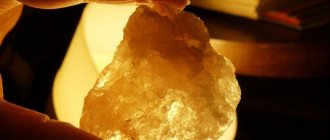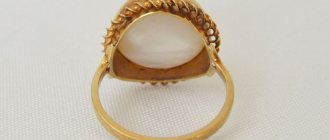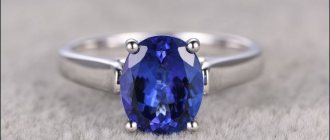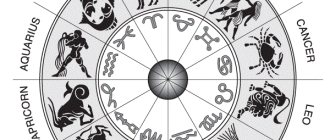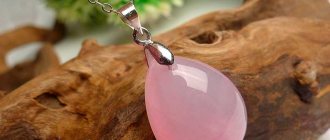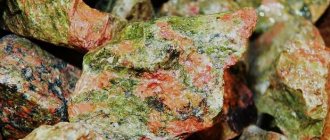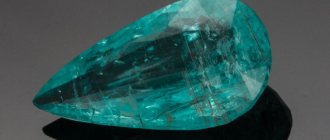There is an ancient legend: if you press the malachite stone to your body, you can become invisible and learn to understand the language of animals.
No other mineral on earth has such magical characteristics.
In addition to its magical and healing properties, the green patterned gem is one of the most beautiful and popular in the world: it is used to make real works of art, unique jewelry, and was used for the interior decoration of palaces.
We’ll take a closer look at other characteristics in this article.
What is this stone?
What it looks like, photo:
Russia was one of the first to start mining malachite on an industrial scale. Not only jewelry and interior decoration of palaces, but also copper were made from it.
There were many names. Malachite was especially often called curly or peacock stone for its patterning and play of green shades.
The Ural mines are the place where malachite was mined in Rus', where it was processed, producing amazingly beautiful mosaics, vases, and boxes.
Bazhov’s work “Malachite Box” is the hallmark of magical malachite. Semi-precious or ornamental stone belongs to copper ores, since it contains the highest percentage of copper.
Malachite Box
Common in areas of oxidation of copper deposits.
The surface of the gem is a non-repeating pattern: waves, shade transitions, stains, “eyes”, dark rings, stripes.
Malachite deposits are often the predecessors of copper ore deposits. Its “neighbor” is considered to be azurite, which, according to observations, subsequently also turns into malachite.
Previously, the mineral was very expensive and was considered precious. There are quite a lot of deposits of it, so the price is relatively low.
Nowadays it is actively used in jewelry and stone cutting, and is presented as a gift at government receptions.
Cost of the stone and favorable time of purchase
Malachite is a semi-precious mineral. Products made from it are inexpensive. The price increases depending on the complexity of the work and the material in which the gem is framed.
Thus, a silver bracelet and a box made of this stone cost on average 2–3 thousand rubles. The price of the earrings is 15,000 rubles. Beads cost 2000 rubles.
The best time to buy a gem is spring or summer. A stone purchased in autumn or winter will carry negative energy.
Malachite is a semi-precious stone that amazes with its beauty. It is used to make jewelry, souvenirs and magic amulets.
If you have purchased a stone or been influenced by it, please describe your story. Share the article with your friends on social media. networks.
Origin story
Photo of unprocessed malachite:
The first deposits date back more than 6 thousand years and are located in Africa (north and central part).
It is known that stone was originally used to make tools. And only then they began to use it in jewelry.
Malachite also served as a source of copper mining.
Different countries have their own stories about the charming and mysterious malachite:
- The gem was especially revered in Ancient Egypt. It was believed that he was a symbol of the goddess Hathor, who brought fertility to people and was responsible for female attractiveness and happiness in family life. In Rome - the goddess Venus.
- In India, malachite is considered a stone that can completely cleanse the subtle bodies and energy centers (chakras) of a person.
Malachite began to be used as jewelry already during the Middle Ages. Then other methods of copper mining were invented, and large deposits in Europe began to deplete.
Not only decorations, but also the mosaic method of decorating interior decoration (tables, columns, doors) gained popularity.
The Russian mosaic method, reminiscent of lace, opened up new possibilities for using stone. Thin plates, when connected, formed enchanting patterns.
Wall panels, vases and boxes were also created. However, there are very few objects in the world carved from solid pieces of malachite, since large sizes are not typical for the mineral.
But even small fragments have viscosity and softness, which makes malachite one of the most convenient stones for processing.
The style of Russian mosaic became known far beyond Russia, starting in the 1830s. It was then that Demidov, a Russian industrialist involved in stone mining, introduced amazing malachite products to a wide range of people.
Tabletop made using Russian mosaic technique. Ural Geological Museum.
And the exhibition, held in 1850, made the mineral worldwide popular as a jewelry stone, used for interior decoration and the manufacture of luxury items.
In mineralogy, malachite officially received its place in 1747 thanks to a scientist from Sweden.
Over time, samples of malachite of lower quality began to be used to obtain turquoise-colored paint. It was used to paint the roofs of houses, the outer parts of buildings, and was used in painting.
All about stones. Malachite: History, myths, properties.
MALACHITE Malachite is a bright green mineral. In nature, it is found in different shades - from almost black to white-green. The name of the stone comes from the Greek word “malakos”, which means “soft”. According to another version, from mallow “malach” since the color of malachite resembles the color of the leaves of this plant. Other names for the mineral and its varieties: plush malachite, satin ore, peacock stone, copper greens. Around the year four thousand BC, a cholera epidemic swept across Egypt. She did not touch only those who worked in the malachite mines. This event can be considered a turning point in the history of the stone. Malachite quickly became fashionable among the Egyptians as a precious stone for making amulets against diseases. It was primarily used to make cosmetics and eye ointments, but was later used for amulets and jewelry. True, as it turned out, long-term use of such shadows caused serious harm to mental health, since copper compounds, which the stone is rich in, poisoned the brain. The mineral was hung over the cradle of a baby to protect him from evil spirits, nightmares and illnesses. Malachite stone or malachite products are the first gift given to a newborn. In Ancient Greece, malachite was used by architects. It covered the columns of the Temple of Diana in Ephesus, which were later moved to Constantinople to decorate the Temple of St. Sophia. Malachite was also widely used for decorative purposes. The Temple of Athena in Ancient Greece was lined with this stone. The Russian Hermitage Museum contains a collection of more than two hundred malachite items. The Romans attributed this stone to the goddess Venus. Therefore, young unmarried girls were not allowed to wear it. The Romans believed that the gem enhances attention from the opposite sex. In Rus', this stone has long been loved and considered a stone of fulfillment of desires. Deposits of this mineral were discovered in the Ural region in the 1840s, where it was known for a long time, but was used primarily as copper ore. In the Middle Ages, the stone was used as one of the most powerful amulets against black magic. Mining Malachite is a valuable industrial copper ore, but its value is limited because... accumulations of malachite are concentrated in the upper, rapidly mined oxidized common copper deposits. Dense sintered malachite with a beautiful pattern of zonal structure is a valuable ornamental stone for decorative and artistic products. With the development of mining in the late 17th and early 18th centuries in the deposits of the Kama region, the Middle and Southern Urals, and the Orenburg region, the center for processing technological malachite moved to Russia. This turn in the history of malachite was due to the fact that in the Urals, against the backdrop of thoroughly mined deposits of the world, Russia acquired an untouched and truly inexhaustible storehouse of copper and iron-copper ores. Who and when was the first to pay attention to the Ural malachite ore will forever remain in the realm of guesswork. In Russian literature of the first half of the 18th century they did not write about him. This was a time when Russian mineralogy did not yet exist; domestic original and translated literature about stone was carried away by overseas exoticism. Of the more than five hundred volumes of the first and second third of the 18th century, looked through by the author in search of “traces” of malachite, only two were given a short line. Malachite seemed to dissolve in copper and copper greenery. In 1747, in the book of the Swedish mineralogist Vallerius, a modern form of the name of the stone appeared - malachite (the Russian translation of Vallerius was published in 1763). This new form was adopted by Europe. At the end of the 50s of the 18th century, Le Sage used it, in relation to Ural, or, as they wrote then, Siberian stone. With reference to Le Sage in 1761, Ural malachite was described in great detail by the French scientist Abbot Chappe d'Auteroche, who visited the Urals for the purposes of astronomical research in the same year. Equipped with magnificent engravings, d'Auteroche's description is the best publication known to us about malachite of the 18th and 19th centuries. Published in France, it spread the glory of Russian malachite throughout Europe. They started talking about the stone. They were looking for him. They were used to decorate mineral cabinets in Russia and Europe. Attempts to classify malachite date back to the 1750s. * Completely pure poplar-green malachite, * With black spots, which is unpleasant in appearance, * Mixed with azure stone or copper blue, * Malachite with round features or circles, the green of which is lighter in places: these circles are similar to the onyx species, * Light, green-blue or turquoise-colored malachite, which is revered as the best. In 1777, Abbot Fountain established the mineral that makes up malachite, leaving it with the same name. Mineralogical interest in malachite became a new page in its history. And it is flattering to realize that it was the Russian stone that formed the basis of European gemological knowledge about malachite. Many mineral cabinets had rich collections of Ural malachite: the best were the cabinet of Catherine II in the Winter Palace (the collection was transferred by her to the Mining Institute), the cabinets of natural scientists P. S. Pallas, I. I. Lepekhin, who visited malachite deposits in the Middle Urals; The largest collection of malachite, which left all others far behind, was owned by Count N.P. Rumyantsev (they say that during the war of 1812 Napoleon was looking for it, who dreamed of taking Rumyantsev malachite to France). In the 60s of the 18th century, at the time of early acquaintance with malachite, it was called drop-shaped, small-droplet, similar to floating scale, radiant, fluffy malachite. This is how malachite appears in the handwritten catalog of the mineral cabinet of an unknown owner, kept in the library of Count F. Tolstoy and dating back to 1765. The register of the mineral cabinet of Count N.P. Rumyantsev of the first third of the 19th century uses the form of malachide, less often malakid, he distinguishes: “in tufts or stars, clustered needle-shaped crystals of satin malachide, radiant, in a spherical form, in a mossy form, hairy, like stars and tufts, dense malachid." Descriptions of dense malachite are often accompanied by the assessment: “excellent in pleasant color, extraordinary density and size.” Over time, the descriptions become more accurate and stricter. Here is how, for example, malachite extracted from the Kyshtym mine (Southern Urals) was described in 1825: “It consists partly of dense and partly of veined malachite; in places covered with yellowish-brown ferruginous pebble and quartz; the larger part is lined with clay, which constitutes the main rock of this deposit. The exposed parts of malachite itself are kidney-shaped and droplet-shaped species of beautiful green color, characteristic of malachite. In its interior one can see caves, the walls of which are covered either with very soft, velvet-like malachite, or with a black substance that forms very small, ball-like particles. When this piece was delivered to the surface (165 kg), it was almost not damaged at all, and as a beautiful ore it can serve as decoration for the best mineral collection.” In the meantime, especially in the first quarter of the 19th century, collecting malachite, as well as collecting mineral cabinets, became not only a need, but also a fashion. “Moscow Telegraph” - a fashionable magazine of Pushkin’s time - shared with the reader in 1831: “The dandies of Paris, for example, are now collecting different collections: some of shells, another of birds, another of animals...” In Russia, they preferred stone to all this. Following the scientists, writers, artists, architects, and dignitaries began to collect it. And, of course, no one passed by malachite. In the twenties, contemporaries noted the rich collection of malachite of P. P. Svinin’s “Museum” - one of the attractions of Pushkin’s St. Petersburg. The collection was part of the collector’s Mineral Cabinet, located in a house on Mikhailovskaya Square. The office was visited by foreign guests of St. Petersburg. A. Humboldt visited it. (In 1834, P. Svinin announced the sale of the Museum, and the malachite collection was sold at auction). The offices of A. Stroganov and V. Kochubey had unique malachites. An idea of what a large private collection of malachite of those years could have been like is given by the complete collection of Count N.P. Rumyantsev that has come down to us (kept in the Moscow State Art Museum). Two cabinet registers, 1828 and 1845, contain interesting material about the progress of acquaintance with Ural stone. The first - the so-called Large Format collection - notes the receipt of ores from the Turinsky, Bogoslovsky and Gumeshevsky mines, malachite from the cuprous sandstones of the Kama region, and rare samples of malachite on quartz from the Berezovsky gold deposit. The second collection of the Small format contains descriptions of malachite from the mines of the Zlatoust mountain district - a special attraction of the Ural malachite. The collection as a whole is replete with all varieties of stone: radiant films, rosette-shaped and fan-shaped needle crystals, sheaf-shaped radiant bunches, stalactites, simple kidney-shaped crusts and magnificent buds, regularly formed crystals and specimens of oxidized copper ore, where malachite balls-spherulites, composed of the finest fibers, unrealistically green, with a soft velvety surface, sections of petrified wood, the voids of which are filled with malachite crystals or the same spherulite balls. The main attraction was the malachite giants. They were preserved in state assemblies as national treasures. Among the most notable are the two monoliths of the Mining Institute Museum in St. Petersburg. One weighing 1.5 tons (96 pounds) was transferred here by Catherine II in 1789. In turn, it was presented to her by the heirs of A.F. Turchaninov, the owners of the Gumeshevsky mine, as a fragment of a monolith that weighed 2.7 tons (170 pounds). This “shard” was then valued at 100,000 rubles. Another block weighing just over 0.5 tons came here in 1829 from the owner of the Kyshtym mine in the Southern Urals, L. I. Rastorguev. Another monolith of malachite weighing about 0.5 tons is kept in the Nizhny Tagil Museum of History and Local Lore. He inherited it from large mining operations in the 1830-1840s in the Mednorudnyansk mine. In terms of mass, it is not inferior to the block from the collection of the Sverdlovsk Museum of History and Local Lore. Malachite from copper deposits in the Urals near Yekaterinburg is especially valued - it was here that malachite was mined for facing fireplaces, tabletops, pilasters and vases in the Malachite Hall of the Winter Palace, as well as the columns of St. Isaac's Cathedral in St. Petersburg. Abroad, malachite is found in copper deposits in Romania and Australia. Chile, Zimbabwe, Namibia, USA (Arizona) and Russia (Urals, Kazakhstan). and other countries. Nowadays the main supplier of malachite to the world market is Zaire (Kolwezi). Malachite is partly processed on site and partly supplied to the market in raw form. Widely distributed throughout the world; associates with azurite, cuprite and native copper. Usually found in the oxidation zone of copper ore deposits located in limestone. Application Malachite is a valuable jewelry and ornamental stone. Due to its attractive color, pattern and good polishability, it is widely used in the manufacture of office decorations: table lamp bases, vases, boxes, ashtrays and other products. In Russia in the 18th-19th centuries. Using the “Russian mosaic” method, columns, pilasters, mantels, tabletops, large floor vases, clocks and other items in palace interiors were lined with malachite. More than 200 items made of malachite are stored in the Malachite Hall of the Hermitage. Columns made of malachite are installed in the altar part of St. Isaac's Cathedral in St. Petersburg. Despite its low hardness and instability, malachite is still one of the most popular jewelry and decorative stones today. It is polished into cabochons or slightly convex tablets, beads are made from it, as well as small cabinet decorations, boxes or stands for candlesticks, watches, ashtrays and small figurines. When processing malachite, they try to maximize the decorative qualities of the stone. Particularly prized is ocellated malachite with thin concentric rings - “peacock eye”. In large ores, malachite cannot be confused with anything; in small pieces, where banding is not visible, it looks like many opaque green stones. In Ancient Egypt, Greece and Rome, malachite was used to make beads, cameos, amulets and other objects and decorative items. Ground stone and malachite powder were used as a natural pigment for painting and in cosmetics. Malachite was used to make small decorative items and jewelry, including buttons. But already in the 19th century it began to be used for finishing large items, for example, in St. Isaac's Cathedral, part of the altar columns are lined with it, and along the edges of the royal doors there are eight malachite columns - four on each side - 10 meters high and 42 centimeters in diameter. The most famous is the Malachite Hall of the Hermitage, restored after a fire in 1837. An example of excellent work made of malachite using the “Russian mosaic” method can also be a large vase with a quadrangular top, made in 1839-1840 in Yekaterinburg. Malachite is considered a “stone of health” because it helps with toothaches, asthma, rheumatism, and poisoning. Treats depression, insomnia, nightmares, anxiety and unreasonable fears. In lithotherapy, it is used to treat diseases of the lungs, liver, ears, eyes and heart, and improve the function of the spleen and pancreas. It also banishes melancholy, slows down the aging process of the body, promotes tissue regeneration, calms the nervous system, and has a beneficial effect on the pituitary and pineal glands. Malachite stones are usually used for contact effects, especially if the work involves the heart. Lithotherapists advise heart patients to wear a ring with malachite on their left hand. A woman who wants to have good and thick hair needs to wear malachite beads. A bracelet made from this stone is recommended for skin diseases, as well as to remove itching, rashes, and red spots. According to the latest data from American researchers, malachite is also an effective anti-radiation agent. Therapeutic effects (lithotherapy): malachite improves vision and concentration; used in the treatment of pancreatitis, bronchitis, cough, diseases of the spleen, stomach (especially colic), as well as mental disorders, insomnia, headaches. Traditional healers believe that malachite is an excellent remedy for skin diseases. Malachite bracelets cleanse the skin of allergic rashes and red spots. Malachite beads, according to healers, help to significantly improve hair growth. Lithotherapists suggest that this mineral can relieve attacks of bronchial asthma, treat eye diseases, and improve vision. It is believed that malachite plates applied to sore spots can cure rheumatism. Malachite affects the forehead and heart chakras. It is believed that the lighter the stone, the greater the healing power it has. Light green stones are best used when working with the heart, lungs and blood vessels, dark green ones promote food assimilation, and black-green ones improve blood supply to the uterus. Magical properties The stone has great magical powers. In ancient times it was considered the stone of doctors and scientists. It is believed that malachite brings fulfillment of desires; it is popular as a children's amulet. The talisman promotes the growth of children, reduces pain, drives away illnesses, promotes the attention of others, including arousing unhealthy interest, and banishes melancholy. The amulet protects children from magic and witchcraft. In the old days, a ring with malachite was worn as a talisman against cholera and plague. The owner of a cup of malachite, who regularly uses it for drinking, becomes able to “understand” the language of our smaller brothers - animals. This stone is considered a talisman against the evil eye, so amulets for children are often made from malachite. Malachite promotes physical and emotional harmony. This stone endows its wearer with wisdom, spiritual powers, and cunning. If a person wears gold jewelry with malachites, it will bring him success in love and financial affairs. If it is silver, then the person will enjoy life more. Malachites are especially strong in May. In India, blue-green azure-malachite is especially valued, where it acts in close alliance with azurite. The stone is placed on the “third eye” area (on the Ajna chakra) to cleanse the subconscious of anxiety, fear, resentment, and obsessive thoughts. Malachites work well in the solar plexus area. They relieve emotional trauma and tension in the diaphragm, as a result of which the energy between Manipura and Ajna is aligned. In Ayurveda, malachite is used to “dissolve” energy blockages and “traffic jams” and open channels for the free passage of energy flows. For this purpose, stones are placed in the area of the Anahata heart chakra and in places of “blocks”. In ancient times, it was believed that malachite was connected with the forces of the Universe and was their conductor to Earth. Legends went about this mineral: as if he could make a person invisible, and if a thread is from a malachite bowl, you will understand the language of animals. In Rus', malachite was considered a stone that fulfills desires. Experts say that malachite is one of the most powerful magic stones and, if not working with it, can be very dangerous, especially for women. The stone so much attracts the attention of the opposite sex to its owner that it risks to be abused. Therefore, it is recommended to straighten the gem in silver, which neutralizes aggression from men. Malachite is the stone of May. During this period, it is the most strong. They say that if in May to wear a mascot of malachite, you can get rid of troubleshooting fears, melancholy, insomnia. The mineral of dark green color supports and enhances the spiritual forces of its owner. He harmonizes his inner world and the world around man. Astrology astrologers recommend wearing malachite, first of all, to people born under the sign of Libra. He makes them attractive, gives them charm, gives eloquence. The rest of the zodiac signs can also be worn by malachite products. The exception is only the virgins and crayfish, which it is categorically contraindicated. Litotherapists especially recommend wearing malachite scales - people born under this zodiac sign, the stone will allow you to find harmony and become more attractive. Cancer, Virgo, Scorpions, on the contrary, are advised to refrain from jewelry from malachite. It is associated with the elements of the Earth and the planets of the Moon, Venus and Pluto. Malachite is a sign of Libra, Taurus. Favorable for lions. Not suitable for Scorpio, Virgo, Cancer. Good for writers, poets, people of art, those who want to strengthen their charm.
Myths and legends
“There is an old legend about the miraculous properties of malachite. It says that there lived a mother and son. One day, the mother fell ill, and the doctor said that she could be saved only by placing an opaque green stone with beautiful patterns on her chest. This stone was mined in the mountains far to the north, and the son did not have time to go get it, since the mother was quickly getting worse. The visiting man said that two days' journey from here the khan was building a new palace and there was a lot of beautiful green stone that was used to decorate the main entrance. The son jumped after the stone. Having galloped to the place, he waited until the craftsmen had left, and took a tile the size of two palms, put it in his bosom and headed back to his horse. It was a terrible thing to steal from the khan. He knew that if he asked for a stone for his sick mother, he would be thrown into prison, since the khan did not share his property with anyone. Suddenly the guard noticed a thief who jumped into the saddle and galloped off into the mountains. They organized a chase after him. The fugitive did not have time to get to the caves and said out loud: “What should we do?” Suddenly he heard someone answering him. His horse spoke to him. “Put the stone on my back and rest your hands on it, then it will make us invisible,” the horse answered. So they did. The guards galloped past without noticing them. The son brought the stone to his mother. A green stone was tied to the patient’s chest, and the illness began to quickly go away.
According to legend, when Neuron came to circus performances, he ordered the circus arena to be filled with a mixture of malachite powder and sand. This bloody emperor always had a green robe on his shoulders. It was believed that in this green color Neuron was looking for peace and tranquility, and perhaps energy, which he lacked. After all, malachite has very powerful energy, which descends to it from Pluto and Venus. Bottom line Malachite is the most desirable stone for many women (especially dark-haired beauties). It is bright, delicate, velvety, silky. In addition, if you believe the legends, wearing such a stone can give a woman true love. It is also believed that he is capable of preserving the charm and beauty of the fairer sex. Every man who looks at her will not be able to hide his admiration and increased interest in such a charming person. And finally, the most important characteristic of malachite is the gift of good mood and sincere happiness. Malachite should be used as a talisman by those who want to enhance their charm and attractiveness. The stone helps musicians, writers, and artists if it is set in copper. Artists need the gem most of all, but for them malachite needs to be set in white metals: silver, platinum, aluminum.
Meaning
There are still disputes between mineralogists from different countries about the origin of the name of the stone.
There are several most famous versions:
- Malachite comes from the Greek. μολόχη - poplar, mallow, by analogy with patterned designs with plant leaves.
- The name was obtained due to the softness of the mineral, derived from the Greek word malakos - soft.
- In ancient times in Rus' and in the Middle Ages, the Latin name “Molochites” was used, which had a synonymous form “Murrin”.
- Until the 18th century among pundits it was customary to call malachite melochiles, melochites, molochites (from the Latin). Mineralogist from Sweden Valery suggested calling it “Malachite”.
- On the territory of Russia for a long time (until the 19th century) the mineral was called “Malakhid” and “Malakid”. And the popular names are curly stone, peacock eye and velvet ore.
Questions/Answers
It is impossible to tell everything about the main glory of the Urals in a short article. If you have questions, ask, we will be happy to delve into the literature and find answers.
How to distinguish a fake?
It is clear that the stone is being counterfeited.
Let's try to choose a natural gem:
- It is heavier and more expensive than a fake. And he's prettier too.
- The fake often has brown layers.
- Imitation is always duller and “more boring in pattern” than natural stone.
The seller will not allow you to do this: place a drop of ammonia on the stone. The drop on the stone will turn blue, and the stone in this place will lose color.
When counterfeiting, 3-4 colors are used. Natural stone has a much wider palette of shades.
Have you heard of synthesis?
Chemists have long tried to synthesize (produce, grow in laboratory conditions) a green miracle.
Becquerel and Proust obtained malachite powder at the beginning of the century before last. But you can’t put the powder in the ring.
We are proud : in the last century, scientists at Leningrad State University synthesized malachite, which was very difficult to distinguish from natural one.
Then malachite was grown using a different method, and again in the USSR (well, what to do - some scientists were working then).
There is information that artificial malachite produces.
How to care?
- Protect your jewelry from falls, impacts, and heavy mechanical impacts.
- Avoid exposure to any chemicals (including household chemicals and cosmetics).
- Contaminated jewelry can be washed with cool water and baby shampoo. Then rinse and dry with a napkin.
- Avoid ultrasound and steam when cleaning.
Who should wear it?
Do you want to be attractive and increase your charm? Carry malachite jewelry or an amulet in your pocket.
It is very good for a child to have a malachite pendant.
How to wear?
Malachite does not like gold. Set it in silver, or even better, in copper.
In a pendant or ring on the left hand it normalizes the functioning of the heart.
Interesting : in the old days they wore a round pendant made of malachite, set in copper. This talisman brought happiness.
What is the price?
It’s a pity that in Russia (!!!) you can officially only buy products made from foreign malachite. But this is a fact. But facts are stubborn things.
Let's go look at imported malachite...
| Product; frame; stone mining country | Price in rubles |
| Pendant; costume jewelry alloy, silver; Congo | 3600-9600 |
| Beads; costume jewelry alloy; Congo | 2000-8900 |
| Bracelet; costume jewelry alloy; Congo | 1790-4090 |
| Earrings; silver; Congo | 9800-14400 |
A variety of amulets are made from the gem. These are tigers, frogs, elephants and other animals. Their prices range from 3800 to 5500 rubles.
What about the Ural gem?
The deposits have officially been developed. And unofficially, who is stopping you from spending your vacation in the Urals? And God himself ordered the local residents to study local history. They also know where the mines and malachite mines were.
What colors are there?
In the “Dictionary of Manual Natural History” of the 18th century they wrote that “the color of onago is the greenest.”
The malachite palette includes all shades of green from light green with blue to deep green. Shades of green depend on the amount of copper ions.
Where can I buy?
Buy imported malachite at stone exhibitions, online stores, and large jewelry stores. You can also get hold of Ural malachite from individual craftsmen.
When is the best time to buy?
Late spring and summer are the best times to buy.
Autumn and winter with dying, frozen energy will transfer it to the gem.
What stones does it go with?
In principle, malachite does not need company. He feels great alone.
But he wouldn’t mind having a gem as a neighbor:
- coil;
- jade;
- adularia;
- nephritis;
- onyx.
The stone doesn't like diamonds. Red and blue stones too.
Where to see real malachite?
The Hermitage has a malachite hall. In it, admire the little things made of malachite - there are more than a hundred of them. Eight malachite columns, eight pilasters, a pair of malachite fireplaces. There is a huge vase in the center of the hall. And floor lamps, snuff boxes, candlesticks, clocks and many more malachite crafts.
And the columns of St. Isaac's Cathedral in St. Petersburg? Their diameter is about a meter and height is 9.5 meters.
Do you think huge columns and impressive vases are made from single monoliths of stone? Not at all. This is "Russian mosaic".
What is Russian mosaic?
The ingenuity of Russian craftsmen knows no bounds.
The base for columns, vases, and tabletops was made from cheap stone: granite, serpentine, and other simpler stones.
Then the jewelry work began. Malachite was sawn into thin slices, and the real beauty of the stone was revealed - intricate patterns, storm waves, grass in the wind. And, selecting a pattern, matching line to line, shade to shade, they covered the product with plates. The design was adjusted so carefully that it is still impossible to understand where one piece of stone ends and another begins. Everything merges into a solemn symphony of fancy patterns. The joints were adjusted so carefully that it was almost impossible to find a seam.
Is the Florentine mosaic the same? No. Russian craftsmen have come up with a way to paste not only flat surfaces, but also rounded ones. Florentine mosaic did not know such delights...
What did the Russian tsars give?
The stone of royal beauty was given to crowned heads.
Nicholas I sent the Swedish prince a pair of malachite vases as a gift (the stone was real, from the Urals). The Turkish Sultan also received a large vase. Caroline Augusta (the fourth wife of Franz I, Emperor of Austria) was not involved in politics. However, she also received a pair of malachite tables as a gift.
How to distinguish African malachite from the Ural?
The process is complex. The chemical formula and color are the same. In small jewelry it is almost impossible for a non-specialist. In general, the African pattern has small regular concentric rings. Ural malachite has curlicue rings of irregular shape. “Africans” have a more contrasting alternation of light and dark zones.
Physical properties
The famous green tones are given to the stone by copper, the amount of which can reach at least 57% (Cu). And additional colors are obtained from the admixture of iron. CO2 (carbon dioxide) – 19.9%, H2O (oxygen) – 8.2%,
The mineral is very easy to scratch and break. It is soluble in acids and releases carbon dioxide in this process.
Distinctive characteristics are low hardness and viscosity, which simplify processing.
The original name in science is copper bicarbonate.
Characteristics:
| Chemical formula | Cu2CO3(OH)2 |
| Impurities | Fe (iron) |
| Color, trait | All shades of green, starting from bluish-turquoise and ending with saturated tones, the brightness depends on the density. |
| Shine | Matte, the crystals have a glassy appearance, if aggregates or fine-fiber crystals, then silky, “velvet”. |
| Cleavage | Perfect |
| Mohs hardness | 3,5 – 4 |
| Density | 3.75 - 3.95 g/cm3 |
| Kink | Splintered, shell-like |
| singonia | Monoclinic |
| Transparency | Not transparent |
| Refractive index | 1,656 – 1,909 |
The structure of the crystals is needle-like, prismatic or lamellar. If there is a mechanical impact, the crystals take on a spherical or dendroid shape.
It melts due to high temperature. It is very difficult to find well-formed crystals: they are generally small and rare.
Chemical composition
Contains: Copper oxide CuO - 71.59% (Cu - 57.4%), carbon dioxide (CO2) 19.90%, water (H20) 8.15%.
Natural malachites usually meet this composition. CaO, Fe2O3, SiO2, etc. are also found in very small quantities. Their presence is obviously due to adsorbed or mechanical impurities of foreign substances.
Varieties
1. Copper green - earthy soft malachite.
Crystallographic characteristics
Monoclinic system
Symmetry class. Prismatic 2/m? V. With. Etc. gr. P21/a(C 52h). a0 = 9.49; b0 = 12.00; с0 = 3.24, β = 98°42′. Axle ratio. 0.788: 1: 0.274; Z = 4.
The main forms of crystals are a {100}, m {110}, b {010} and p {201}.
Malachite. Kidney-shaped aggregate. Zaire
Field
Previously, malachite was mined in huge quantities in Russia (until 1917). Now the reserves are almost exhausted; small amounts of mining remain on Lake Baikal.
Gemstones from the Korovinsko-Reshetnikovskoe deposit and Altai are also supplied.
The most active production and export is carried out in the Congo. The stones from there have a characteristic bright pattern and cylindrical design.
There are several other deposits in the world, but not so large:
- France;
- Germany;
- Kazakhstan;
- England (County Cornwall);
- Australia;
- Italy;
- Namibia;
- Chile.
African malachite
African malachite has bright shades and alternating light and dark stripes of green color, which makes the stone original with a spectacular color scheme.
How stone is mined and processed
There are many rock deposits. Some of them are close to exhaustion, while others can supply markets around the world with the mineral.
In Russia, the rock was mined in the Urals. It was here that the most valuable specimens with beautiful patterns were found. Ural and Siberian stone was most valued. Now these deposits are almost completely depleted.
In our country, small mines remain on Lake Baikal. The mineral is also mined in the Korovinsko-Reshetnikovskoye deposit.
At the moment, Congo occupies a leading position in the supply of green stones to world markets. African malachite is distinguished by its dark green color and cylindrical pattern.
There are also other small deposits. They are scattered across different countries of the world:
- Germany;
- Kazakhstan;
- France;
- Cornwall;
- Great Britain.
The found stones are cut into pieces of the required size and polished. Depending on the design, they are sent to jewelers or stone cutters.
The gem is given the desired shape and polished. After this, the stone acquires a glassy shine.
Raw crystals are prized by collectors. In many museums you can find large-sized specimens.
As a supplement, watch the video blog about the search for this stone:
Varieties
When classifying malachite, the pattern, design and texture are taken into account. Some stones are only suitable for copper mining, but other specimens are quite interesting and can be used for jewelry.
This table will help you understand the groups:
| Name | Description |
Kinds:
|
|
Pseudomorphoses, aggregates, compounds with other minerals:
|
|
Plush
Nodular
Radiant
Pseudomalachite
Atakamite
Chrysocolla
Aurichalcite
Cuprite
Native copper
The mineral composition is similar to malachite. Often they grow together and represent monolithic original specimens.
They are used for the manufacture of decorative items in a single copy, which are especially highly valued.
Malachite + other rocks
After joining, crystals are obtained, which include several gems:
Calcite – malachite
It is a mixture consisting of gypsum, malachite and calcite.
Azurmalachite
One of the most popular combinations, characterized by an interesting greenish-blue tint. Both elements grow together to form one crystal.
Star malachite
Chalcedony is interspersed with round-shaped malachite spots.
Agate – malachite
The latter is expressed by spots of a greenish tone and looks beautiful in the overall structure of jasper.
Eilat stone
A combination of 3 minerals: malachite, chrysocolla and azurite. The stone has a dark, rich green color with bluish inclusions.
Lapis - malachite
This is a duet of quartz and malachite.
Mysoreen
An original gem combining malachite, chrysocolla and calcite.
There is also pressed malachite, which is obtained artificially: small pieces are combined into a single stone using technologies that use high pressure.
Pressed malachite
Finely patterned malachite
In nature, this stone has an original cut reminiscent of birch leaves. It was this stone that inspired Bazhov to write his fairy tale. Finely patterned malachite is very beautiful and has a high value in the Urals, but today the reserves of malachite in this region have sharply decreased and this malachite has become very rare there.
Magic properties
Since ancient times, sorcerers and magicians have actively used stone in rituals. Malachite is an energy stone, strong and has great natural strength.
Therefore, it is recommended to take it with you on trips to nature.
There are other meanings:
- It is considered a kind of conductor between the other world and the real one.
- In ancient times, they always took it with them when hunting. Foresters and rangers used it as a talisman against accidents. Malachite helps to understand the language of animals and becomes invisible (according to legend).
- If you wear the mineral for a long time , then the animal nature begins to awaken in a person, and emotions begin to take over the mind.
- Women wearing jewelry with malachite become very attractive to men, but not only positive fans appear, but also not very decent ones.
- If a person has a profession related to creativity , then the stone will help achieve high results, give inspiration, and suggest the right decisions to practitioners.
Malachite helps those who have their own business, as well as public people, to become successful and rich, as well as to receive the support and favor of colleagues and subordinates.
Interesting: if the stone has cracked into small pieces, it is a sign for the owner to be extremely careful and think about his health.
Malachite for women
This stone is recommended to be worn by pregnant women and those suffering from pulmonary diseases - it is believed that it can improve health. The forest gem is recommended to be taken by travelers and those who have many enemies - it is believed that the stone promotes invulnerability against them.
- The brighter the malachite, the more pronounced its magical properties;
- Helps to get pregnant if this does not work out;
- Helps find missing items;
- Helps to attract the attention of men to a woman;
- Promotes wisdom, but can also awaken the predatory side in a woman.
Medicinal properties
Malachite, according to lithotherapists, is able to heal and eliminate symptoms in many cases.
This is a real natural healer. Healing properties:
- Promotes the appearance of thicker hair (you will need to purchase a hairpin with a gem).
- If your joints hurt , then you can apply malachite plates to the sore and inflamed areas.
- To normalize high blood pressure , you need to wear beads or a pendant.
- To prevent disruptions in the nervous system, it is recommended to simply look at malachite crystals (the pattern and pleasant color scheme have an equally calming effect).
- To improve memory , organize and concentrate faster, it is advisable to place a small malachite figurine on your desktop or in your office.
- Earrings with a gem will improve your eyesight.
- For skin diseases, they use water in which malachite has been left for several hours. You can sprinkle problem areas with powder made from malachite.
- People with respiratory tract diseases , including those in the chronic stage, need to wear a pendant on their chest.
Women should wear the stone during pregnancy, and for those diagnosed with cancer, malachite will help reduce metastases.
The brighter the stone, the greater its healing properties. Malachite has a healing effect due to its high copper content, which has a beneficial effect on the human body.
Who is suitable according to their zodiac sign?
Malachite has its “favorites”, and for some representatives of the astrological zodiac system it only enhances the negative qualities in their character.
Therefore, according to the horoscope, the mineral is not recommended for Scorpios , Cancer and Virgo .
It influences others very positively:
- Pisces will be able to understand people better and concentrate on the main thing.
- Libra will become even more attractive to others, gaining charisma and charm.
- Aries will gain calm and diplomacy.
- Aquarians will forget past grievances and become more cheerful.
- Taurus will be able to find the root of all problems and failures in life.
- Capricorns will sleep better and stop worrying a lot.
- Sagittarians will demonstrate parental qualities to the maximum and devote more time to their family.
You should give the stone a rest and periodically remove jewelry, and also carefully observe whether it reinforces the negative. Otherwise, use another mineral.
Malachite belongs to the “earthly” element; its patron is Saturn.
Talismans and amulets
In Ancient Egypt, amulets were made for children to improve sleep and calm them down. The stone was believed to ward off evil spirits.
And in the Urals, a green patterned gem is considered a stone of joy and happiness. Products with malachite especially help people with a kind heart and pure intentions.
You can have a mineral even without cutting. It's great for meditation. It is better to purchase a stone in spring or summer, then it will help and support, and give strength.
Acquired in autumn and winter – carries the energy of withering.
Name compatibility
Malachite is suitable for people with any names, but it brings the greatest benefit to men named Denis and women named Anastasia.
During his childhood, Denis used the stone to get rid of insomnia, causeless anxieties and phobias, improve his health, and protect himself from dangers. In his adult years, thanks to the malachite amulet, Denis becomes the object of desire of many women, gaining charm and attractiveness.
Anastasia with the mineral becomes wise, hardworking, and creative. Malachite helps her preserve love, spend energy correctly, get rid of obstacles on the path to her cherished goals, and fulfill her desires.
Decorations
Malachite is rarely combined with gold. Silver, cupronickel or copper are more suitable for the mineral as a cut. Jewelry is suitable for men and women equally.
For the latter, these are earrings, bracelets, necklaces, beads, rings (worn only on the middle finger of the left hand or on the little finger).
The male half can buy checkers, figurines, cufflinks, watches with thin cupronickel plates inside, backgammon, checkers and chess.
Form of being in nature
The appearance of crystals. Malachite crystals are rare, usually prismatic [001]. Short and long prismatic, needle-shaped.
{100} doubles are common.
Aggregates. Malachite
most often forms sinter, kidney-shaped, grape-shaped aggregates, earthy masses (copper greens), and plaques. Sometimes it forms fibrous radial aggregates with a characteristic silky sheen.
Sintered forms of malachite occur in karst caves and cavities of ore-bearing limestones, into which water containing copper bicarbonate is filtered.
Large kidney-shaped spherulite formations of malachite are characterized by a concentric-zonal structure, which is especially impressive on polished samples.
The texture of malachite is varied - ribbon, streamy, concentrically circular, radiant-star-shaped with alternating layers of different colors.
Other uses of stone
Malachite products look especially beautiful in any interior, giving it an aristocratic feel: these can be figurines, vases, candlesticks, lamps and boxes, ashtrays.
In ancient times, they learned how to make cladding from thin plates and cover surfaces (tables, columns, etc.) with malachite, but now such work is no longer carried out due to the depletion of deposits.
Artificial Malachite
Malachites are also made from non-natural materials and this is not considered a fake. This technique is usually used when malachite plates are used to decorate furniture or boxes. Non-natural stone does not have the healing and magical properties characteristic of real stone, but it is used as a decorative material for making household items.
Price and care
The cost of ornamental stone starts from $5 per gram.
If the work is handmade by a famous master, then the cost of the jewelry can reach 5 thousand rubles. And so earrings, beads and sets start from 500 rubles. and reach 2 thousand rubles.
The stone should not be thrown; it must be looked after very carefully. Rinse periodically with warm water and wipe with a dry cloth, keep away from fire, do not treat with acids or abrasives.
If the stone is necessary for treatment, then to cleanse it it must be placed in the ground overnight, which is periodically replaced with fresh soil.
It is better to store in a dark and dry place. It is important to remember that malachite is a fragile and soft stone.
How to distinguish from a fake?
In the photo: on the left – fake, on the right – natural stone
The mineral is not considered expensive and is rarely counterfeited. But still, scammers can deceive here if you don’t know how to distinguish natural malachite from artificial one.
Rules:
- Glass does not heat up when applied to the skin, but malachite immediately becomes warm.
- The mineral can be easily scratched with a piece of glass or a needle.
- A real mineral does not have ideal lines or symmetry. This is the main difference. Upon closer examination, the surface of a fake will be perfectly smooth, while that of malachite will have chips and cracks.
On the left is a fake, on the right is a real stone. Pay attention to the cut lines (indicated by arrows) - 3 imitation colors against countless shades of natural malachite
You can also find more professional imitations:
- Pressed chips of malachite combined into a stone.
- Artificially grown malachite, which is obtained in laboratories. Only a professional with special equipment can distinguish it from the real thing.
What stones does it go with?
The combination of malachite and diamond is beauty, and that’s all
Malachite is “friends” with minerals of the “fire” element: Ruby, pyrope and Diamond.
But other minerals can also become “neighbors”:
- jasper;
- jade;
- chalcedony;
- jet;
- aquamarine;
- emerald;
- moonstone and many others.
Neutral proximity to Amethyst, Chrysoprase, Beryl and Rock Crystal.
Compatibility
Well compatible with turquoise, jasper, pearl, emerald, jet, selenite, chalcedony, jadeite, opal, aquamarine, aventurine.
You should not wear Malachite together with ruby, garnet, pyrope and diamonds.
Interesting Facts
- In ancient times, fashionistas used crushed malachite as eye shadow. And for rituals, shamans covered the body with malachite powder.
- If you dream that you are purchasing a malachite box, in reality you will have to meet an unpleasant person.
- Bad dreams with this stone (crashed, broken product) foreshadow illness and failure. Jewelry promises good luck and success.
- A huge malachite weighing 500 kg is located at the Mining Institute.
- You can admire the Malachite Room in the Winter Palace (created according to the design of A.P. Bryullov in 1838 - 39), as well as the columns in St. Isaac's Cathedral (St. Petersburg).
Malachite in stone cutting art
Malachite drawing room of the Winter Palace
Dense varieties of good color and beautiful patterns are highly valued. Since the end of the 18th century, they have been used for cladding flat surfaces (for example, countertops from Ostankino).
Since the beginning of the 19th century, it has been used for cladding three-dimensional works (vases, bowls). Objects coated with malachite are widely used by Russian emperors as diplomatic gifts.
The fame of malachite outside Russia was facilitated by orders from French masters N.N. Demidov and a collection of works from his own malachite factory prepared by A.N. Demidov for display at the World Exhibition in London in 1851.
Thanks to the Demidovs, since the 1830s, malachite began to be used as a material for architectural decoration: the first malachite hall was created by order of P.N. Demidov by the architect O. Montferrand in a St. Petersburg mansion on the street. B. Morskaya, 43.
Almost simultaneously, A. Bryullov will decorate a malachite living room for Emperor Nicholas I in the Winter Palace. The largest interior works with malachite were performed in St. Isaac's Cathedral. Malachite, mined at the Demidov mines, was supplied to Paris, Rome, Naples and Florence.
The technique of cladding with malachite is called “Russian mosaic”. It is based on the principle used by European craftsmen to reduce the cost of lapis lazuli products back in the 17th century: the surface of an object made of metal or cheap stone is covered with thinly sawed stone plates.
This creates the illusion of a monolith carving. The term “Russian mosaic” in relation to the mosaic covering of objects was first used in reports on the World Exhibition of 1851. It is the use of this technique that helps in attributing an object when an art historian cannot understand whether he is studying a Russian or a European object. This technique is unusual for European objects.
